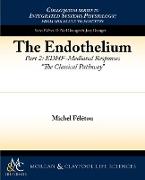- Start
- The Endothelium, Part II
The Endothelium, Part II
Angebote / Angebote:
The endothelium controls vascular tone by releasing various vasoactive substances. Additionally, another pathway associated with the hyperpolarization of both endothelial and vascular smooth muscle cells contributes also to endothelium-dependent relaxations (EDHF-mediated responses). These responses involve an increase in the intracellular Ca concentration of the endothelial cells followed by the opening of Ca-activated K channels of small and intermediate conductances (SKCa and IKCa). These channels show a distinct subcellular distribution, suggesting that their activation could be elicited by distinct stimuli. Following KCa activation, the endothelial hyperpolarization can be conducted to the underlying smooth muscle cells by electrical coupling through myo-endothelial gap junctions. In addition, the potassium efflux can lead to the accumulation of potassium ions in the intercellular space and the subsequent activation of smooth muscle Kir2.1 and/or Na/K-ATPase. The hyperpolarization of the smooth muscle cells produces vascular relaxation, predominantly by closing voltage-gated calcium channels, and vasodilatation. EDHFmediated responses are altered in various pathologies or, conversely, act as a compensating mechanism when other endothelial pathways are impaired. A better characterization of EDHF-mediated responses should allow determining whether or not new drugable targets can be identified within this endothelial pathway for the treatment of cardiovascular diseases. Table of Contents: Endothelium-Dependent Hyperpolarizations: The Classical "EDHF" Pathway / Conclusion / References
Folgt in ca. 10 Arbeitstagen




